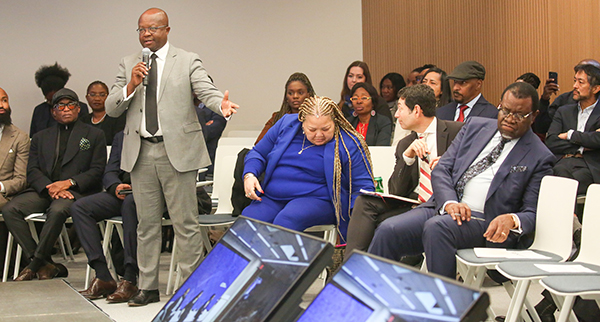Kuzeeko Tjitemisa
Washington, D.C – National Planning Commission director general Obeth Kandjoze has said the United States of America should look at funding the design of a portfolio of intra-country infrastructure, such as the envisioned 2 500-kilometres hydrogen backbone, between Namibia and South Africa.
Namibia and South Africa have agreed to explore the construction of a 2 500km green hydrogen backbone (network of pipelines) that will easily and cheaply transport molecules between the two countries. The countries will produce hydrogen molecules, which are critical to decarbonise global and regional hard-to- abate sectors (including industries such as steel production, shipping and aviation). The politician said this would be an ideal outcome of the US-Africa Leaders’ Summit that kicked off yesterday. Kandjoze, who is also Namibia’s Green Hydrogen Council chairperson, said the US has shown a willingness to fund projects and infrastructure which will help with regional decarbonisation.
“In order for this to happen, billions of US dollars will need to be deployed,” he told New Era. Namibia is already in partnership with The Netherlands, and has structured a multibillion-dollar blended financing infrastructure fund called SDG Namibia One.
This fund will be managed by professional fund managers, and will look to raise concessionary climate financing from around the world to build this systemic and regionally-critical infrastructure.
“We already raised more than €600 million from Europe; now it is time for the US to come to the party. We call upon the US to deploy its expertise and funding into such professional vehicles in order to really make a dent in the regional decarbonisation efforts,” he added.
Furthermore, Kandjoze said his wish is for the speedy conclusion of the envisioned MoU between the Ministry of Mines and Energy and Power Africa as the first sign of partnerships to come between Namibia and the US on this critical issue.
“We expect to conclude this MoU in January. We were going to sign it at this platform, but our legal colleagues from the US took a little long to finish reviewing the MoU,” he added.
The US is working to achieve economic rejuvenation at home and exercise leadership abroad, especially on climate action.
“Namibia has some of the largest known deposits of rare earths and other critical raw minerals needed to facilitate the global just energy transition.
We have indicated our willingness to work with partners around the world, including the United States, to sustainably extract and add value to said minerals at home in Namibia, as we aspire to sell products such as permanent magnets and batteries from Namibia, not just export rare earths,” he said.
Kandjoze applauded the US for passing landmark legislation such as the Inflation Reduction Act, which he said would put the development of clean energy solutions in the United States at the forefront of its contribution to climate change.
He further encouraged the US to keep an eye on opportunities to invest in countries like Namibia, which are uniquely positioned to contribute to combating climate change globally.
Kandjoze said, for example, that not all countries, “:but both the US and Africa have identified that natural gas will be a critical low-carbon bridge fuel as we move from relying on more carbon-intensive fuels such as coal to renewable energy resources”.
“Namibia permits the exploration of gas off its coast, just as the US does, while pushing ahead with its efforts to make the most of the renewable energy resources. We are both using our natural endowments to the fullest to contribute to a cleaner and more sustainable planet,” said Kandjoze.
He, however, reminded the summit that “whatever we do, it must be symbiotic in nature and sustainable for the planet, otherwise it will be a futile undertaking.”


